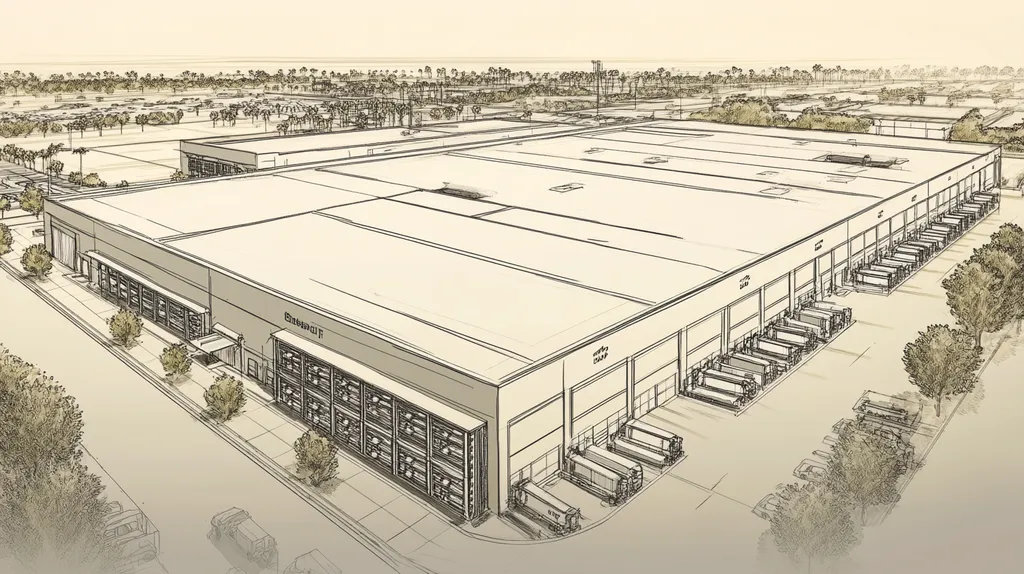The commercial roofing industry generates over 11 million tons of waste annually, with nearly 80% ending up in landfills despite being recyclable. This mounting crisis threatens both environmental sustainability and regulatory compliance.
As disposal costs rise and environmental regulations tighten, property owners and facility managers must adopt strategic approaches to managing old roofing materials.
This comprehensive guide examines proven methods for safe disposal, from initial removal planning through final processing, providing actionable solutions that protect both the environment and the bottom line.
SECTION 1: FUNDAMENTAL CONCEPTS
Proper disposal of old commercial roof materials is not just a matter of compliance; it’s a critical step towards safeguarding our environment and community health. Each year, the Environmental Protection Agency reports that about 11 million tons of roofing materials are dumped into landfills. This staggering figure highlights the urgent need for effective disposal practices. In this section, we’ll delve into why proper disposal is vital, the various recyclable roofing materials, and the environmental repercussions of neglecting these responsibilities.
Importance of Proper Disposal
The significance of properly disposing of roofing materials cannot be overstated. Many materials, like asphalt shingles and metal, are not only recyclable but can significantly decrease landfill waste. When property owners prioritize best disposal practices, they comply with legal regulations while also championing sustainability.
Furthermore, recycling roofing materials can lead to substantial cost savings. Property owners often find that they can lower removal costs and potentially receive rebates or credits from recycling facilities. It’s a decision that makes both environmental and financial sense.
Moreover, companies focused on sustainability are likely to capture the interest of environmentally-conscious clients. By emphasizing responsible disposal practices, businesses showcase their leadership in the industry and enhance their brand reputation.
Ultimately, investing in proper disposal methods benefits not just the environment but also contributes to community goodwill. Property managers and business owners must recognize their essential role in fostering green initiatives.
Types of Recyclable Roofing Materials
Commercial roofs frequently include materials that are highly recyclable. For instance, asphalt shingles and metal roofing are prime candidates for repurposing. Asphalt can be ground down for use in road construction, while metal can be melted down and reshaped into new products.
Other roofing materials, such as TPO, PVC, and EPDM membranes, also have specific recycling processes available. These materials can be collected and transformed into new roofing systems, which helps minimize the demand for new resources.
Even less common materials like wood shakes and tiles can be recycled into biomass fuel or mulch. Knowing which materials are recyclable opens pathways to more environmentally-friendly roofing practices.
To maximize sustainability efforts, property owners should collaborate with recycling facilities that accept these roofing materials, ensuring every component of the roofing system is disposed of responsibly.
Environmental Impact of Improper Disposal
The repercussions of improper roofing material disposal are severe. Landfilling roofing waste can lead to toxic runoff that pollutes nearby water sources. Materials like asphalt shingles can linger in landfills for decades, worsening existing waste management challenges.
Additionally, manufacturing new roofing materials produces significant carbon emissions. Recycling existing materials can help reduce this impact, lowering the overall carbon footprint associated with roofing activities.
Improper disposal also incurs unnecessary costs for local governments, as increased landfill management fees often get passed on to taxpayers. This places a burden on community finances.
In summary, recognizing the environmental consequences tied to disposal practices is crucial. Each effort made toward recycling and responsible disposal translates into a meaningful step towards fostering a healthier environment.
SECTION 2: SYSTEM COMPONENTS
The urgent need for safe disposal of old roofing materials extends beyond the environment—it’s a fundamental requirement for commercial success. With over 11 million tons of roofing waste generated annually in the U.S., property owners and facility managers have a critical responsibility to embrace responsible disposal methods. Each type of roofing material presents unique disposal challenges, making it essential to understand specific regulations and sustainable practices throughout the industry.
Low-Slope Asphalt Roofing Materials
Low-slope asphalt roofing systems are commonly found in commercial spaces and come with specific disposal requirements due to potentially hazardous substances. Materials such as modified bitumen and roll roofing can release harmful chemicals if improperly discarded. Property owners must educate themselves about local regulations concerning the disposal of these materials to avoid significant penalties.
Fortunately, options for recycling asphalt shingles are available, allowing these materials to be transformed into new asphalt mixes. By participating in recycling programs, property owners can reduce their landfill impact while potentially lowering disposal fees. Utilizing a certified recycling facility ensures materials are managed responsibly, protecting the environment.
Moreover, contractors should maintain thorough documentation of the disposal process. This documentation serves as proof that materials are handled in compliance with local laws, proving essential during inspections and audits.
In conclusion, the responsible disposal of asphalt roofing materials may seem complex, but it significantly enhances a company’s sustainability goals and operational effectiveness.
EPDM and Other Synthetic Roofing
EPDM (Ethylene Propylene Diene Monomer) roofing is a popular choice in commercial roofing due to its durability. However, disposal of EPDM can be challenging because its synthetic components complicate recycling efforts. As such, many property owners default to landfilling, which isn’t an environmentally friendly option.
Recognizing the environmental impact, some manufacturers offer take-back programs for their products. By engaging with these initiatives, property owners support circular economy principles, minimizing waste and promoting sustainability.
Additionally, facilities managers should explore alternatives to traditional landfill disposal. Research indicates that certain EPDM materials can be recycled into new roofing products or other industrial materials. Educating staff about these options is crucial for achieving long-term sustainability.
Ultimately, addressing the disposal of EPDM and synthetic roofing requires a proactive approach, combined with partnerships for responsible recycling methods.
Metal and Other Specialty Roofing
Metal roofing systems are increasingly favored in commercial applications for their longevity and energy efficiency. When it’s time to replace these roofs, disposal can be straightforward if approached correctly. Unlike asphalt or EPDM, metal materials are highly recyclable with established pathways for responsible disposal.
When removing a metal roof, property owners should ensure materials are sorted and directed to metal recycling facilities. Many scrap yards are eager to accept old metal roofs, often providing financial credits for the materials that can help offset replacement expenses. This practice not only supports the bottom line but strengthens environmental stewardship.
Furthermore, other specialty roofing materials—such as slate and tile—may require tailored disposal methods due to their unique characteristics. Understanding these specifics empowers property owners to make informed decisions about proper disposal channels.
In summary, with a focus on recycling, metal and specialty roofing systems can be managed effectively, supporting sustainability and regulatory compliance within the commercial roofing industry.
SECTION 3: IMPLEMENTATION METHODS
Implementing safe disposal methods for old commercial roof materials is not merely a good practice; it’s essential for environmental health and compliance with regulations. Failure to dispose of these materials responsibly can not only result in hefty fines but can also damage a company’s reputation. The U.S. Environmental Protection Agency indicates that construction waste, including roofing materials, represents a significant portion of landfill accumulation. Therefore, efficient collection, transportation, and recycling protocols are vital components of an effective roofing strategy.
Collection and Transportation Procedures
Establishing effective collection and transportation procedures is crucial for the safe disposal of roofing materials. It is advisable to have specialized dumpsters placed on-site during the removal process. This setup allows for immediate collection and helps prevent materials from scattering or being compromised.
Transportation logistics also play a significant role. Vehicles must comply with local regulations regarding weight limits and hazardous materials, ensuring safe transit from the job site. Tracking waste from collection to its final disposal or recycling point adds accountability and transparency to the disposal process.
Regularly scheduled pickups not only maintain a clean job site but also minimize delays. Property owners should partner with licensed waste haulers who are familiar with local guidelines. This partnership increases the likelihood of recycling materials instead of simply disposing of them.
Every aspect should prioritize both safety and environmental concerns, significantly reducing risks associated with hazardous roofing materials.
Sorting and Processing Techniques
Efficient sorting and processing techniques are key to maximizing the recycling rates of old roofing materials. Once collected, materials should be sorted by type, such as asphalt shingles, metal, or synthetic membranes. This categorization directs each material to the appropriate recycling facility.
Property owners should also implement training programs for workers to ensure proper sorting protocols. A knowledgeable team can identify hazardous materials and handle them correctly, reducing risks during processing.
It’s essential to remove contaminants—like nails and insulation—early in the process, as these can hinder recycling efforts and increase landfill contributions. Using magnetic tools can streamline this process by effectively removing metal components.
By enhancing sorting and processing practices, property owners can significantly increase the volume of roofing materials diverted from landfills. This not only supports sustainability initiatives but also aligns with evolving industry standards.
Recycling Facility Requirements
Selecting the right recycling facilities is crucial for ensuring that disposed roofing materials are repurposed effectively. The facilities should be certified and follow local, state, and federal regulations. Many regions now enforce strict environmental guidelines for recycling operations.
Property owners need to assess local facilities to understand which materials they accept and the processes they utilize. This knowledge is vital in making informed disposal decisions that affect the entire roofing project.
Additionally, working with facilities that provide reports on recycling metrics can offer insights into the environmental impact of projects. Certifications from recognized organizations can further ensure the facility adheres to best practices.
By choosing suitable recycling partners, property owners not only ensure compliance but also enhance their sustainability profile, a valuable consideration for tenants and buyers looking for eco-friendly options.
SECTION 4: MAINTENANCE REQUIREMENTS
Proper maintenance is crucial for the safe disposal of old commercial roof materials. Each year, thousands of tons of roofing waste enter landfills, creating significant environmental hazards and straining local waste management systems. To protect public safety and ensure compliance with regulations, property owners must adopt proactive measures. This section highlights essential maintenance requirements, focusing on pre-removal preparations, safe handling practices, and adherence to local regulations.
Pre-Removal Preparation Steps
A solid pre-removal plan is vital for conserving resources and preventing environmental harm. Property owners should begin with a comprehensive assessment of existing roofing materials to identify any potential hazards, such as asbestos or other toxic components. Enlisting a qualified roofing contractor to conduct this inspection ensures that risks are managed before the removal process commences.
Documentation plays a key role. Keeping detailed records of all materials slated for removal helps develop a strategic disposal plan. This documentation should specify the types of materials, estimated quantities, and designated disposal locations.
Scheduling the removal during favorable weather conditions enhances safety and efficiency. Adverse weather, like rain or high winds, can impede handling and raise the risk of accidents.
Additionally, securing the area around the work site is necessary to prevent unauthorized access. Establishing a clearly marked perimeter ensures both workers and the public remain safe throughout the removal process.
Safe Handling and Storage Practices
Minimizing hazards during the handling of old roofing materials is essential. Workers should receive training on best practices for lifting and transporting heavy items and be equipped with appropriate personal protective equipment (PPE), including gloves, helmets, and respirators. Using tools specifically designed for roofing work further reduces the risk of injury.
During the removal, materials must be packed carefully to avoid exposure to potentially dangerous substances. Hazardous materials should be stored in labeled containers to signify their risks clearly.
Effective storage procedures are important for preventing environmental contamination. This includes selecting well-drained storage areas located away from stormwater runoff sources. Ensuring prompt monitoring and containment measures for any leaks or spills is also critical.
Establishing a comprehensive waste management plan can streamline the overall disposal process. This plan should incorporate identifying suitable recycling or disposal facilities and planning for transportation, ensuring materials are organized until they can be disposed of properly.
Compliance with Local Regulations
Understanding local regulations is crucial for the safe disposal of roofing materials. Many jurisdictions enforce specific guidelines for handling and disposing of both hazardous and non-hazardous waste. Property owners must familiarize themselves with these requirements to avoid hefty fines and potential legal troubles.
In certain areas, permits or inspections may be required prior to removal and disposal. Consulting with local authorities or waste management agencies can clarify necessary steps. This proactive approach ensures compliance and prepares property owners for any potential penalties.
It’s equally important to confirm that disposal facilities meet environmental standards. Partnering with licensed waste haulers guarantees that materials are transported and disposed of responsibly, minimizing the risk of environmental harm.
Lastly, staying informed about updates to regulations can help property owners maintain compliance. Regularly monitoring changes in waste disposal legislation can protect properties from unexpected costs and enhance community responsibility.
SECTION 5: PERFORMANCE METRICS
Measuring the effectiveness of old roof material disposal is crucial for both environmental sustainability and operational efficiency. With nearly 11 million tons of roofing waste generated annually in the U.S., property owners must systematically evaluate their recycling practices. By understanding how to assess recycling efficiency, track environmental impacts, and conduct cost-benefit analyses, stakeholders can make informed decisions that benefit both their bottom line and the planet.
Measuring Recycling Efficiency
To ensure roofing materials are effectively recycled, property owners need to establish clear metrics for evaluating their recycling programs. Key metrics include the percentage of materials recycled versus discarded. For example, if only 50% of materials from an old roof are diverted from landfills, targeted improvement strategies can be developed.
Consideration of the types of materials involved is also essential. Certain substrates, like TPO and EPDM, typically have higher recycling rates, while others may lag behind. Understanding these nuances allows for better planning and boosts overall recycling efficiency.
Additionally, tracking the sources of materials sent to certified recycling facilities can enhance recovery rates and compliance with local regulations. By routinely assessing these metrics, businesses can refine their processes and improve outcomes.
Lastly, regular audits can bolster performance. Consistent measurement and analysis lead to actionable insights, enabling companies to identify trends and make data-driven decisions for future projects, therefore maximizing their resource utilization.
Tracking Environmental Impact Reduction
Understanding the environmental benefits of recycling old roofing materials is crucial for making informed decisions. One significant metric is the reduction in carbon emissions achieved by recycling compared to landfilling. For example, recycling helps keep harmful materials out of landfills where they can emit methane gas.
Furthermore, calculating the lifecycle impact of utilizing recycled materials versus virgin materials can showcase long-term advantages. Using recycled materials often results in lower energy consumption and less environmental strain overall.
Engaging in third-party certifications can add credibility to environmental claims. These certifications provide measurable standards, allowing property owners to effectively market their sustainability efforts and demonstrate reduced ecological footprints.
Finally, sharing success stories through sustainability reports or community outreach not only builds a positive reputation but also encourages others in the industry to adopt similar practices. Communicating the collective impact of recycling can foster greater accountability across the sector.
Cost-Benefit Analysis of Recycling
Conducting a cost-benefit analysis (CBA) is essential for assessing the financial implications of recycling old roofing materials. While initial recycling costs may be higher, the long-term savings can be substantial. Reduced landfill fees and potential government incentives often offset these initial expenses.
Additionally, many companies discover that utilizing recycled materials can actually be less expensive than procuring new products. Finding local recycling centers or forming strategic partnerships can further enhance savings on transportation and processing.
It’s also important to consider the reduced risk of facing compliance fines. By adhering to recycling regulations, property owners can sidestep penalties that might otherwise impact their financial stability. This proactive recycling approach enhances the overall risk profile.
Ultimately, property owners should keep thorough records of all expenses and savings connected to recycling efforts. This documentation supports future decision-making and highlights the financial viability of sustainable practices. A well-executed CBA not only strengthens the case for recycling but also contributes to a greener environment.
SECTION 5: PERFORMANCE METRICS
Measuring the effectiveness of old roof material disposal is critical for enhancing both environmental sustainability and operational efficiency. With nearly 11 million tons of roofing waste generated annually in the U.S., property owners must evaluate their recycling practices systematically. By focusing on metrics for recycling efficiency, tracking environmental impacts, and conducting cost-benefit analyses, stakeholders can make informed decisions that benefit both their financial outlook and the planet.
Measuring Recycling Efficiency
To ensure roofing materials are being recycled effectively, property owners must implement clear metrics for evaluating their recycling programs. Notable metrics include the percentage of materials recycled compared to those discarded. If only 50% of an old roof is diverted from landfills, targeted strategies can then be developed to improve that figure.
Another important aspect is understanding the types of materials involved in roofing projects. Some substrates, like TPO or EPDM, tend to have higher recycling rates, while others may lag behind. Familiarity with these variances facilitates better planning and boosts overall recycling efficiency.
Moreover, tracking where materials are sent after removal can further strengthen recycling efforts. Utilizing certified recycling facilities helps ensure a higher recovery rate and better compliance with local regulations. By regularly assessing these metrics, businesses can enhance their processes and achieve improved outcomes.
Additionally, conducting regular audits can foster better performance. Consistent measurement and analysis of recycling efforts lead to actionable insights, allowing companies to identify trends and make data-driven decisions for future projects, thereby maximizing the utilization of their resources.
Tracking Environmental Impact Reduction
Understanding the environmental benefits that come from recycling old roofing materials is essential for making informed decisions. A significant metric to consider is the reduction in carbon emissions achieved through recycling as opposed to landfilling. Recycling prevents harmful materials from entering landfills where they can emit methane gas, thus supporting climate health.
Further, calculating the lifecycle impacts of utilizing recycled materials compared to virgin resources reveals long-term advantages. Often, employing recycled materials leads to lower energy consumption, resulting in less overall environmental strain.
Engaging with third-party certifications can lend credibility to environmental claims made by property owners. These certifications provide measurable standards that reinforce sustainability efforts, helping organizations effectively market their reduced ecological footprints.
Lastly, disseminating success stories through sustainability reports or community initiatives not only establishes a positive reputation but also inspires the industry to adopt similar practices. Communicating the shared impact of recycling promotes greater accountability across the sector while encouraging a culture of sustainability.
Cost-Benefit Analysis of Recycling
Conducting a cost-benefit analysis (CBA) is essential for evaluating the financial implications associated with recycling old roofing materials. While the initial costs of recycling may seem higher, the potential for long-term savings is often significant. Reduced landfill fees and potential government incentives can substantially offset initial outlays.
Additionally, many companies discover that sourcing recycled materials can be more cost-effective than purchasing new products. Securing partnerships with local recycling centers can further optimize transportation and processing expenses, enhancing overall savings.
It’s equally important to factor in the reduced risk of facing compliance fines. By adhering to recycling regulations, property owners can avoid costly penalties that might otherwise strain their financial stability. A proactive recycling approach also enhances the overall risk profile of operations.
Ultimately, property owners should meticulously document all expenses and savings associated with recycling efforts. This thorough record-keeping supports future decision-making while emphasizing the financial viability of sustainable practices. A well-executed CBA not only strengthens the rationale for recycling but also contributes to a healthier environment.
Looking Ahead
The commercial roofing industry stands at a critical crossroads, with over 11 million tons of waste materials threatening environmental sustainability each year.
Through strategic implementation of proper disposal methods, recycling programs, and compliance protocols, property owners can dramatically reduce their environmental impact while potentially saving thousands in disposal costs.
The solutions outlined in this guide provide a clear roadmap for facility managers and property owners to transform their roofing waste management from an environmental liability into a sustainable asset.
As regulations tighten and disposal costs rise, those who adopt these practices early will gain significant advantages in operational efficiency, regulatory compliance, and market positioning.
The future of commercial roofing depends on industry-wide commitment to responsible material disposal – the time for action is now.
FREQUENTLY ASKED QUESTIONS
Q. Why is the disposal of old commercial roof materials important?
A. Proper disposal is crucial for protecting the environment and public health. Each year, millions of tons of roofing materials end up in landfills, contributing to waste and pollution. By adopting responsible disposal methods, property owners can mitigate these impacts and comply with regulations while promoting sustainability.
Q. What types of commercial roof materials can be recycled?
A. Several types, including asphalt shingles, metal roofing, and some synthetic materials like TPO and PVC, are recyclable. These materials significantly reduce landfill use and can be repurposed, promoting environmental sustainability. Collaborating with recycling facilities ensures proper handling and processing of these materials.
Q. What are the best practices for collecting and transporting roofing waste?
A. Establishing specialized dumpsters on-site is essential for efficient collection. Properly documenting the journey from collection to recycling or disposal point enhances accountability. Partnering with licensed waste haulers familiar with local regulations can also improve compliance and sustainability efforts, ensuring responsible management of collected materials.
Q. How can property owners prepare prior to removing roofing materials?
A. Property owners should conduct a thorough assessment for hazards like asbestos before removal. Documenting types and quantities of materials aids in developing a customized disposal plan. Additionally, scheduling removals during favorable weather conditions helps enhance site safety and operational efficiency.
Q. What metrics should be used to measure recycling effectiveness?
A. Key metrics include the percentage of materials recycled versus discarded, and the types of materials involved. Regular assessment helps identify trends and improve recycling processes. Conducting audits can also provide valuable insights into potential improvements and enhance sustainability measures.
Q. What are the potential financial benefits of recycling roofing materials?
A. While initial recycling costs may appear higher, the long-term savings from reduced landfill fees and possible government incentives can be substantial. Recycled materials can also be more affordable than new products. Proper documentation can highlight the financial viability of these practices, supporting better decision-making.
Q. How do local regulations impact the disposal of roofing materials?
A. Local regulations dictate how roofing materials must be handled and disposed of, including potential permit requirements. It’s essential for property owners to familiarize themselves with these guidelines to avoid fines. Partnering with certified recycling facilities ensures compliance and minimizes risks associated with improper disposal methods.










